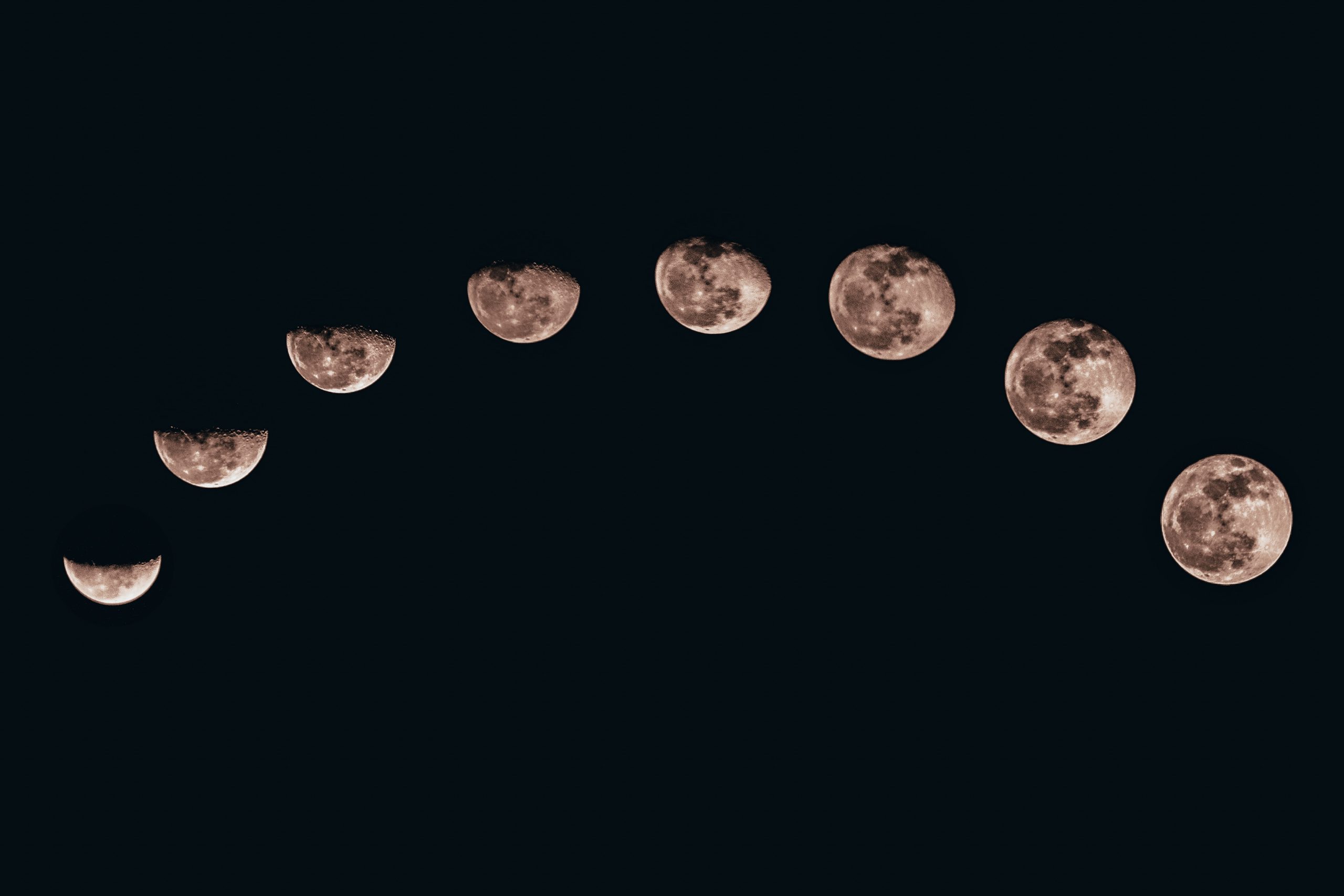The Fascinating Cycle of the New Moon to Full Moon
Whether you’re a stargazer, an avid astronomer, or simply someone fascinated by the beauty of the night sky, you’ve probably noticed the mesmerizing cycle from the dark new moon to the radiant full moon. This celestial dance has captivated humans for centuries, inspiring myths, rituals, and even affecting our moods. In this blog post, we will dive deep into the phenomenon of the new moon to full moon cycle, exploring its significance, its impact on Earth, and much more.
The Lunar Phases
To truly understand the journey from the new moon to the full moon, we must first grasp the concept of lunar phases. The moon orbits around the Earth, and as it does so, it presents itself in various stages, each distinguished by the amount of sunlight it reflects towards us.
The cycle begins with the new moon, where the moon appears completely dark because it is positioned between the Earth and the sun. As the moon continues its orbit, a sliver of its illuminated side becomes visible, marking the onset of the waxing crescent phase. Over the next few days, the moon progresses through the first quarter phase (waxing gibbous), until it reaches its full illumination, the full moon. From there, the moon transitions into the waning gibbous phase, third quarter phase, and finally returns to the dark new moon.
Essentially, the new moon marks the beginning of the cycle, while the full moon represents its culmination.
The Mechanics Behind the Cycle
To comprehend why the new moon to full moon cycle occurs, it’s necessary to understand the mechanics of this phenomenon. The moon reflects light from the sun, but the sunlight doesn’t always reach the entire lunar surface evenly. The moon’s position in relation to the Earth and the sun determines how much of its visible side is illuminated.
During a new moon, the moon is positioned precisely between the Earth and the sun, with the side facing us illuminated by the sun. However, since this illuminated side faces away from us, we see the moon as completely dark.
As the moon orbits the Earth, the angle between the moon, Earth, and sun changes, progressively revealing more of the illuminated side. This gradual illumination leads to the magnificent transformation we observe from the new moon to the full moon.
The Significance of the Lunar Cycle
The cycle from the new moon to the full moon holds great significance in various cultures and disciplines. Here are some remarkable aspects of this lunar phenomenon:
Astronomy:
For astronomers, the lunar cycle offers valuable insights into celestial mechanics, contributing to our understanding of the relationship between the Earth, moon, and sun. This knowledge aids in predicting various astronomical events, such as eclipses and even the motion of other planets.
Astrology and Mythology:
Astrologically, the new moon to full moon cycle is associated with powerful energies, often interpreted as influencing human emotions and behavior. Many ancient myths and legends revolve around lunar deities, attributing the moon’s phases to different aspects of life, including fertility, growth, and change.
Nature and Wildlife:
The lunar cycle profoundly impacts nature and wildlife. Some species, such as certain sea turtles, rely on the moon’s phases for navigation or reproductive purposes. Time-sensitive processes like migration, hunting, and spawning are often governed by the moon.
The Moon’s Effect on Earth
Besides its cultural and historical significance, the moon’s changing phases have tangible effects on Earth. Here are a few ways in which the moon’s journey impacts our planet:
Tides:
The gravitational pull of the moon, combined with that of the sun, causes tides on Earth. During the new moon and full moon phases, when the moon, Earth, and sun align, we experience spring tides. These high and low tides are particularly pronounced, impacting coastal regions and marine ecosystems.
Light Pollution:
During a new moon, when the sky is virtually devoid of moonlight, stargazers and astrophotographers rejoice as it presents an ideal opportunity to observe faint celestial objects without interference from moonlight. Conversely, the full moon can hinder stargazing due to its luminosity, causing light pollution.
Human Sleep Patterns:
It is believed that the moon’s phases can influence human sleep patterns and overall sleep quality. Some studies suggest that certain lunar phases can disrupt sleep, leading to restlessness and sleep disturbances.
Observing the Lunar Cycle
The new moon to full moon cycle presents an excellent opportunity for observations and photography. By keeping track of the moon’s phases, you can plan stargazing sessions or capture breathtaking images of the moon as it transitions from a slender crescent to a radiant sphere. Numerous apps, websites, and calendars provide accurate lunar phase information so you can stay up-to-date with this captivating celestial event.
Remember, patience is key when observing the lunar phases. The moon’s transformation from a mere sliver to a fully illuminated celestial body takes time, but the end result is always awe-inspiring.
In Conclusion
The cycle from the new moon to the full moon is a mesmerizing journey that not only captures our attention but also impacts various aspects of our lives and the natural world around us. Whether you view it through a scientific lens, delve into the realm of mythology, or simply appreciate its beauty, the moon’s phases continue to symbolize renewal, transformation, and the interconnectedness of Earth and the cosmos. So, the next time you witness the moon’s changing face in the night sky, take a moment to reflect on the ancient dance between Earth, moon, and sun.
Table of Contents
